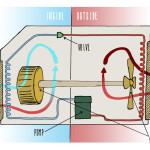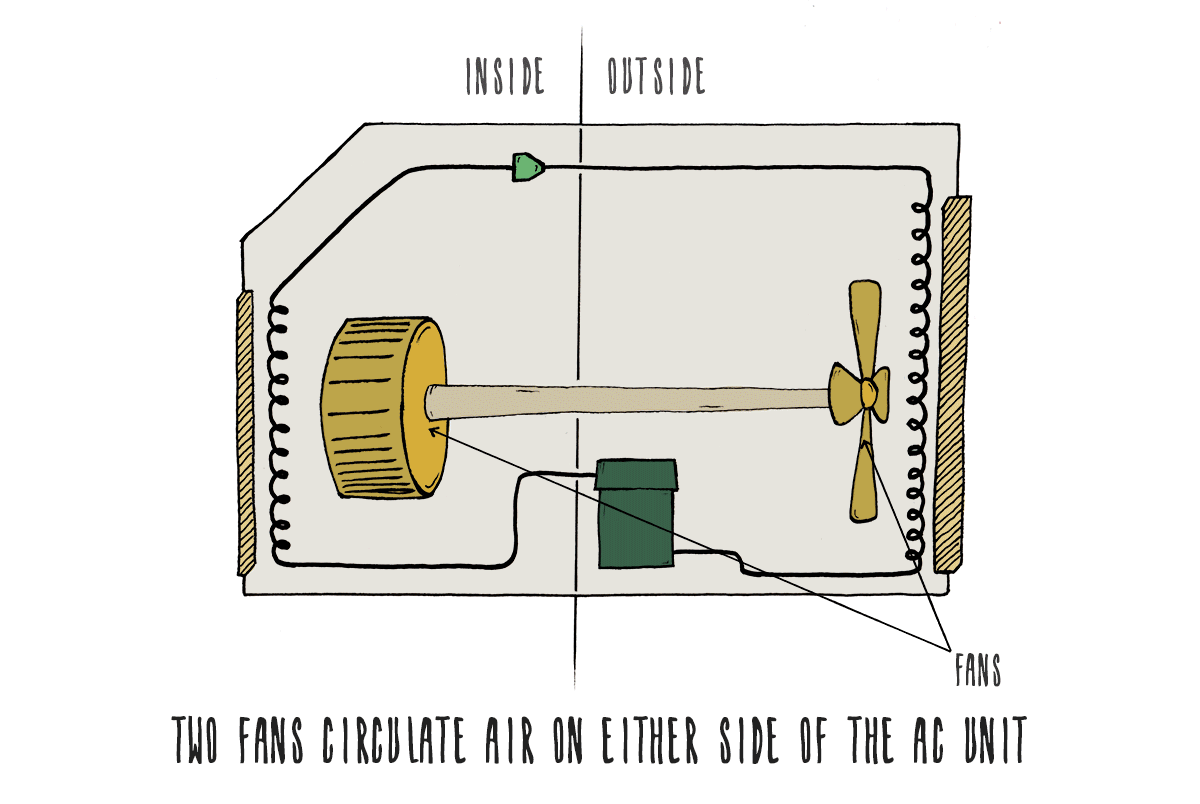Window air conditioners are lifesavers, cooling your room on hot days. How do they achieve this? Appliance Science looks at the cool physics of window air conditioners.
by Richard Baguley
On a hot summer day, there are few appliances more useful than the window air conditioner. These miracles of engineering move heat from inside your home to the outside, cooling the air inside to make it more comfortable. These devices pump heat from one side to another, shifting the heat to the outside and circulating wonderful cool air inside. And they do this in a remarkably small space, without having to knock holes in the wall. So, how do these miracles of cool work?

Fundamentally, a window AC unit is a pump, one that shifts heat instead of water. It does this by using a chemical that turns from a liquid into a gas with a relatively small shift in pressure. Called a phase transition, this process is at the heart of how window AC units work: by repeatedly pressurizing and then releasing this chemical, the window AC unit moves energy from one side to the other. Combine this with a fan that circulates the air through the unit, and you get air conditioning.
At the core of a window AC unit is a loop of pipe, usually copper, with a pump on one side and a small expansion valve on the other. This loop has two radiators on it: one on the outside and one on the inside, which have fans behind them to push the air over them.
On most modern units, this loop is filled with a coolant called R-410A, which is a mixture of two chemicals: difluoromethane (CH2F2) and pentafluoroethane (CHF2CF3). This coolant is used because if you compress it, it becomes a liquid. If you then release this pressure, it evaporates to become a gas, and the difference in pressure needed to go between the two states is fairly small.
These two states are the mechanism that moves the heat from inside your house to outside. When the pump is active (which you can usually hear; it’s the low-frequency rumble from a working AC), it’s compressing the coolant so it becomes a liquid. This liquid passes through the outside radiator, where it sheds heat into the outside air. When it reaches the expansion valve, only a small amount is let through, so the pressure on the other side is much lower. This makes the coolant evaporate, which cools it down.
From there, it passes through the inside radiator, and the air passing over this is cooled. The coolant absorbs the energy (the heat) from the air inside the room, cooling it. The coolant then moves into the pump, where it is compressed again and pushed into the outside half of the loop, and the process repeats.

The whole process is controlled by a computer that measures the temperature of the air being sucked into the unit and turns the pump on and off as required. Because the coolant takes time to pass through the expansion valve, the pump doesn’t run all the time when the unit is cooling: when the pressure on the hot, outside part of the loop reaches a certain level, the controller turns the pump off until the pressure falls. As the coolant passes through the pressure valve, it evaporates and cools in the inside radiator, and you feel the cool air. That’s why you don’t feel an immediate rush of cool air when you turn on a window AC unit: the pump has to build up the pressure before the cooling can begin.
Give me the power
The cooling power of windows AC units is measured in British Thermal Units (BTU). This is a measure of how much energy (in the form of heat) the device can shift from one side to the other. Specifically, one BTU is the amount of energy it takes to heat (or cool) one pound of water by one degree Fahrenheit. The higher this number, the more energy (heat) the unit can move, and the larger the area it can cool.
Most window AC units range from 2,000 to 25,000 BTU. However, most units over 15,000 BTU will require a dedicated 230V power line, like those used by electric dryers. This process of repeatedly compressing the mix uses a lot of energy, which is why window AC units are notorious power hogs, especially when the pump first starts. That’s why the lights sometimes flicker when a window AC unit turns on: The device is sucking down a lot of juice to get the pump started compressing the mix and beginning the cycle. But let’s be honest — that wonderful rush of cool, clean air on a hot day is worth the electricity bill.
So, on a hot, sunny day, give thanks to the science of thermodynamics, the invention of the refrigeration cycle and the complex engineering that keeps you cool.
View original article at CNET
http://www.cnet.com/news/appliance-science-the-cool-physics-of-window-air-conditioners/
